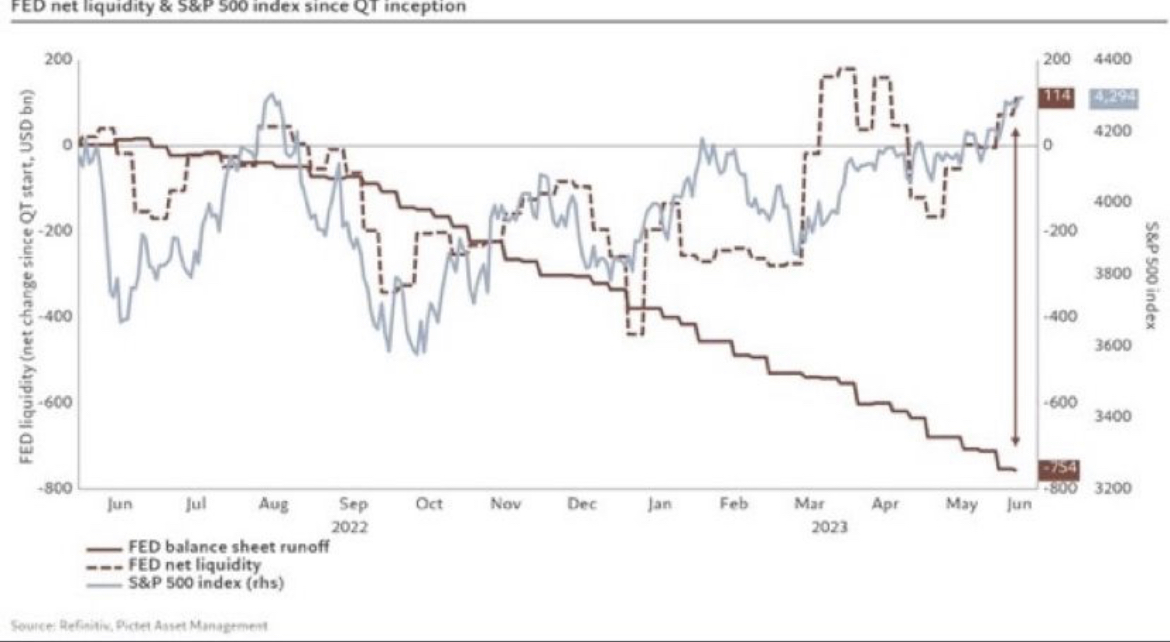- Recent market turbulence has stirred fears of a larger selloff, prompting many to contemplate liquidating their investments. Despite this, underlying market trends indicate that the current state of the market still leans toward an upward trajectory.
- In this analysis, we will delve into three crucial factors that support the argument that the recent market dips may simply be a pause in an overarching positive trend.
The recent erratic behavior of the market once again underscores the age-old adage: fear draws attention. Negative news tends to overshadow positive developments, fueling a sense of urgency that often leads to impulsive decision-making, particularly in the realm of investments.
Even casual observers can note this recurring pattern where alarming headlines amplify anxiety and incite reactionary responses from investors. Relying solely on these sensational news pieces as a compass for investment choices can prove to be a daunting task, one fraught with peril.
To frame this in a broader perspective, consider the historical performance of the market.
Reviewing historical data unveils an intriguing tale: since 1980, the market has seen an average annual decline of 14.2%. Despite these intermittent plunges, the S&P 500 has managed to record positive annual returns in 33 out of 44 years – a testament to the resilience and enduring nature of the market.

Navigating through the tumultuous waters of the market requires an acute understanding of volatility and its inherent nature in the realm of investments. Armed with this knowledge, investors can better equip themselves to weather storms and remain steadfast in their investment journey. Now, let’s delve into three critical insights investors should ponder as they face the allure of liquidating their positions.
Insight 1: S&P 500 Stocks Display Uptrend Momentum
The prevailing bullish sentiment in the market, kickstarted from the troughs of October 2022 and recently rebounding post the 4Q23 retreat, has been characterized by a concentrated surge in market leadership. While a broader market expansion was hoped for beyond the realm of the elite ‘Magnificent 7’ and mega-cap tech stocks, the recent market dynamics cast a shadow of doubt over this summer’s market rotation.
Notably, a striking 78% of S&P 500 Index components currently exhibit an uptrend, indicating a higher ratio compared to previous weeks, despite the overarching index slump. This divergence underscores how the performance of larger corporations has overshadowed the momentum seen in the remaining S&P 490 constituents.
Insight 2: Healthy Market Consolidation Witnessed in July
The market’s performance in July epitomized a customary phase of consolidation, with the S&P 500 clocking in an annualized gain of 14.4%. Over the past month, 9 out of 11 sectors saw positive movements, with technology and communications sectors lagging behind. Noteworthy is the fact that 364 stocks closed the month with gains in their kitty.
A unique spectacle to behold was the remarkable 11.8% disparity between the NASDAQ 100 and the Russell 2000 in July – a chasm of a scale unprecedented in history. This divergence highlighted a scenario where the NASDAQ had a lackluster performance, coinciding with the stock market’s most robust month since the 1990s, with individual stocks outshining the index’s performance by a staggering 70%.
Insight 3: Endurance of Long-Term Bullish Trends
At present, the market exudes resilience, with around two-thirds of stocks boasting a sustained long-term bullish trajectory by trading consistently above both their 50-day and 200-day moving averages. Currently, 73.95% of stocks are above the 200-day average, while 64.21% soar above the 50-day average – levels historically indicative of a robust uptrend.
Historically, when the percentage of stocks above these moving averages hovers above 60%, it has often foreshadowed positive market returns, showcasing a healthy market breadth that substantiates the sustainability of the market’s bullish momentum.
Noteworthy would be a significant market shift if the percentage of stocks above the moving averages dwindled below the 55% to 50% range, signaling a potential cause for investor apprehension. Presently, the market lacks any conspicuous signs of severe distress.
An intriguing observation emerges when the S&P 500 displays a dual divergence from the percentage of stocks trading above moving averages – a phenomenon witnessed in the current landscape, often serving as a precursor to substantial market downturns succeeded by robust recoveries.
In Conclusion
As individual stocks seem to pause for a breather, the collective market doesn’t find itself in the throes of a crisis. The market at large stands on steady ground, buoyed by a robust breadth and an array of favorable trends that underpin the bullish outlook for investors.
